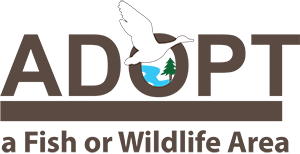Namekagon Barrens Wildlife Area
The NBWA, part of the Northwest Sands Ecological Landscape of northwest Wisconsin, is a pine/oak barrens community habitat that is globally rare. This fire-loving community is rich with diverse prairie flora and fauna. It is home to the largest Wisconsin population of the sharp-tailed grouse and other games species including turkeys, deer, and bears. This is the place to see upland sandpipers, brown thrashers, and other rare open-landscape-loving birds, badgers and so much more.
The St. Croix River flows within 1 mile west of the barrens, and the Namekagon River lies between the north and south units — both national Wild and Scenic designated rivers. Beaver and Clemens creeks are trout streams originating from springs on the north unit and flowing to the nearby St. Croix River. The surrounding lands are mainly Burnett, Washburn, and Douglas county forests containing mostly jack pine, scrub oak, aspen, and red pine plantation forests. To find ruffed grouse near the NBWA, visit the aspen cuts found on these neighboring lands.
Sharp-tailed grouse viewing opportunity
Sharp-tailed grouse, a native prairie bird, are currently found only in suitable habitats in isolated areas of the state. Similar to greater prairie chickens, sharp-tails gather at grassy openings called dancing grounds, or leks, during the early morning hours of spring. At the dancing grounds, males court the females by spreading their wings, rapidly stomping their feet, and rattling their upturned tails as they coo and gobble with the aid of beautiful purple air sacks inflated on their necks. Viewing sharp-tails dancing is an experience you will never forget.
Dancing activity peaks from about April 15 to May 15, depending on the year. Wildlife management staff put up blinds on the NBWA to aid in viewing and surveying the spring population of sharp-tailed grouse.
To learn more or reserve a spot in one of the sharp-tailed grouse dancing ground viewing blinds, contact the Friends of the Namekagon Barrens Wildlife Area (FNBWA) [exit DNR].
Management Objectives
In 2015, the state acquired fee title of the land previously leased (approximately 5,000 acres) through a land trade with Burnett County.
The land in the barrens area was settled in the early 1900s, but went tax delinquent and reverted to Burnett County in the 1930s due to the dry sandy soils, drought, and the Depression. The NBWA was established in the mid-1950s through a lease with Burnett County out of concern for the rapidly declining prairie grouse species in Wisconsin. In 2013, the Conservation Fund donated 1,400 acres specifically for barrens management. In 2015, the state acquired the fee title of the land previously leased through a land trade with Burnett County.
Historically, wildfire was a regular occurrence in this part of the state. Today, the NBWA is divided into approximately 30 burn units and is managed through a five- to eight-year rotation of prescribed burning. The fire maintains this critical pine/oak barrens habitat type for a wide variety of plant and animal species that depend on this habitat community for survival, including the sharp-tailed grouse and upland sandpipers. Several sharp-tailed grouse habitat and population research projects have been conducted on the barrens over the years. Friends of the NBWA offers events [exit DNR] to learn more about the property and the unique habitat. A scenic view parking lot can be found on the Springbrook Trail on the south unit overlooking beautiful, rolling topography of pine barrens and wetlands. For more information, view the Friends' auto tour [exit DNR].
Recreation
-
The following recreational opportunities exist at Namekagon Barrens Wildlife Area:
- ATV trail (only on town road trail system, no ATVs allowed on the property);
- Birding (sharp-tailed grouse viewing opportunities, upland sandpipers, and other rare grassland birds);
- Camping (by permit on county forests);
- Canoeing (available nearby on Namekagon and Totogatic rivers);
- Cross-country skiing and snowshoeing (no designated trails, lots of off-trail cross-country options);
- Dog trialing (by permit only);
- Hiking (no designated trails, but there are endless easy to moderate hiking opportunities);
- Hunting (sharp-tailed grouse by special permit only, turkeys, and other popular huntable species);
- Snowmobiling trail (only on marked trails);
- Trapping (most popular are furbearers);
- Wild edibles/gathering (excellent for blueberries); and
- Wildlife viewing (year-round mammal tracking and chances to see badgers).
Maps
Download [PDF] a map of this property.
If you are interested in exploring this property further, you can access an interactive map.
Find out more about how to adopt this wildlife area.

